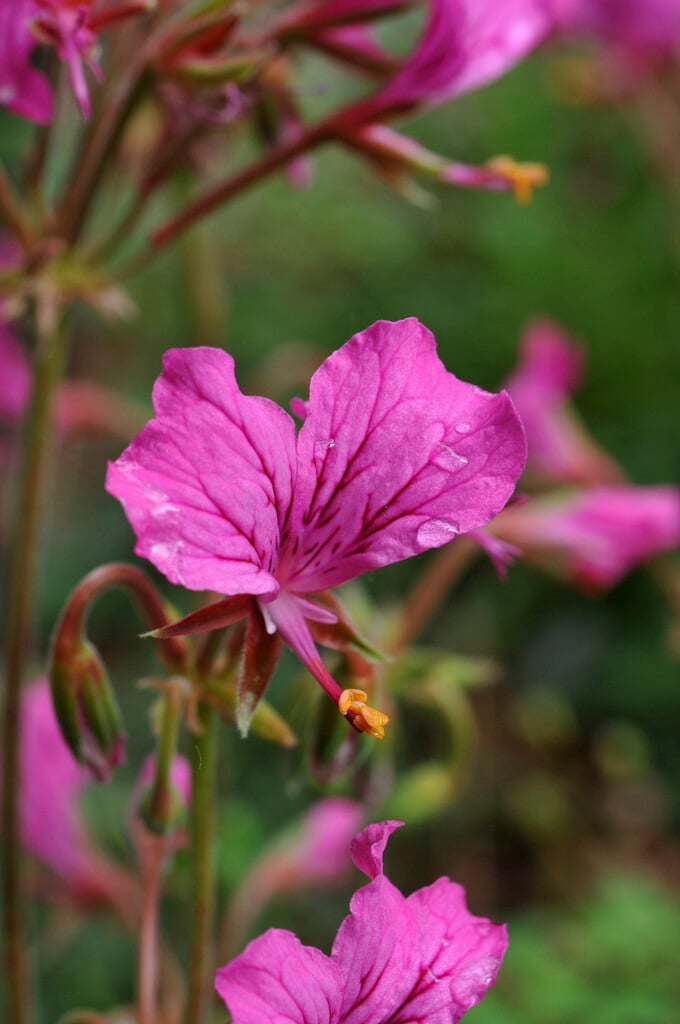Size
Ultimate height
0.1–0.5 metresTime to ultimate height
2–5 yearsUltimate spread
0.1–0.5 metresGrowing conditions
Moisture
Well–drainedpH
Acid, Alkaline, NeutralColour & scent
| Stem | Flower | Foliage | Fruit | |
| Spring | Green | |||
|---|---|---|---|---|
| Summer | Pink | Green | ||
| Autumn | Green | |||
| Winter |
Position
- Full sun
- Partial shade
Aspect
South–facing or West–facing
Exposure
ShelteredDrought resistance
Yes Hardiness
H4Botanical details
- Family
- Geraniaceae
- Native to GB / Ireland
- No
- Foliage
- Deciduous
- Habit
- Clump forming
- Genus
Pelargonium can be perennials, sub-shrubs or shrubs, sometimes succulent and mostly evergreen, with palmately lobed or pinnately divided leaves and clusters of slightly irregular, 5-petalled flowers
- Name status
Correct
- Plant range
- Turkey
How to grow
Cultivation
Grow in well-drained soil in a sunny spot. Plants have good drought resistance and will not tolerate winter wet. A good option for a rock or crevice garden or an alpine house
Propagation
Suggested planting locations and garden types
- City and courtyard gardens
- Cottage and informal garden
- Gravel garden
- Mediterranean climate plants
- Patio and container plants
- Rock garden
Pruning
No pruning required
Pests
May be susceptible to vine weevil, glasshouse leafhopper, root mealybugs, aphids, caterpillars, thrips, fungus gnats and glasshouse whitefly
Diseases
May be susceptible to grey moulds, black leg, pelargonium rust and pelargonium viruses
Get involved
The Royal Horticultural Society is the UK’s leading gardening charity. We aim to enrich everyone’s life through plants, and make the UK a greener and more beautiful place.
